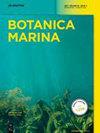Ecophysiology of Kuwaiti macroalgae with special emphasis on temperature and salinity tolerance related to the conditions at desalination plant outfalls
IF 1.4
4区 生物学
Q2 MARINE & FRESHWATER BIOLOGY
引用次数: 0
Abstract
Abstract Brine discharged from seawater desalination plants impacts marine life by exposure to increased salinity and, in some cases, temperature. However, the responses of individual species to such stress remains poorly known yet their understanding is essential for assessing and predicting the impacts of seawater desalination plants. In this study, unialgal cultures obtained by the germling emergence method of 34 taxa representative of the Rhodophyta, Chlorophyta and Phaeophyceae seaweeds in the Arabian Gulf, and isolated from the vicinity of two large desalination plants in Kuwait, were subjected to increased temperature and salinity under experimental conditions in the laboratory. The dataset is complemented by measurements of seawater temperature and salinity obtained at increasing distances from the outfalls of desalination plants and along the Kuwaiti coastline including from two pristine areas, Boubiyan and Fintas. Chlorophyta, especially Ulva spp., and Phaeophyceae displayed remarkable tolerance against hypersaline and thermal stress, suggesting that this group can cope better with adverse environmental conditions. Members of the Rhodophyta were considerably more sensitive to temperature increases.科威特大型藻类的生态生理学,特别强调与海水淡化厂出口条件有关的温度和盐度耐受性
海水淡化厂排放的盐水会增加海水的盐度,在某些情况下还会增加温度,从而影响海洋生物。然而,个别物种对这种压力的反应仍然知之甚少,但它们的理解对于评估和预测海水淡化厂的影响至关重要。在本研究中,在实验室的实验条件下,对科威特两个大型海水淡化厂附近分离的阿拉伯湾红藻、绿藻和褐藻的34个分类群进行了单藻培养,采用胚出法获得单藻培养物。该数据集还得到了海水温度和盐度测量值的补充,这些测量值是在距离海水淡化厂出口越来越远的地方和科威特海岸线上获得的,包括两个原始地区,Boubiyan和Fintas。绿藻类,尤其是绿藻类和褐藻类对高盐胁迫和热胁迫表现出较强的耐受性,表明绿藻类能更好地应对恶劣的环境条件。红藻门的成员对温度升高相当敏感。
本文章由计算机程序翻译,如有差异,请以英文原文为准。
求助全文
约1分钟内获得全文
求助全文
来源期刊

Botanica Marina
生物-海洋与淡水生物学
CiteScore
4.10
自引率
4.50%
发文量
43
期刊介绍:
Botanica Marina publishes high-quality contributions from all of the disciplines of marine botany at all levels of biological organisation from subcellular to ecosystem: chemistry and applications, genomics, physiology and ecology, phylogeny and biogeography. Research involving global or interdisciplinary interest is especially welcome. Applied science papers are appreciated, particularly when they illustrate the application of emerging conceptual issues or promote developing technologies. The journal invites state-of-the art reviews dealing with recent developments in marine botany.
 求助内容:
求助内容: 应助结果提醒方式:
应助结果提醒方式:


